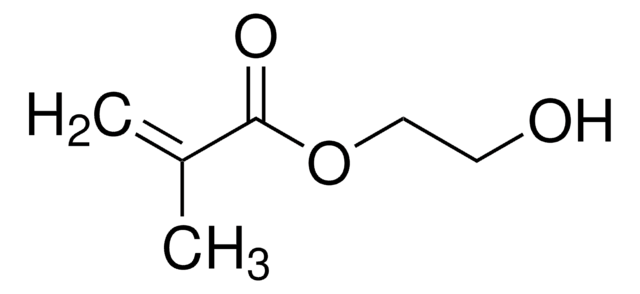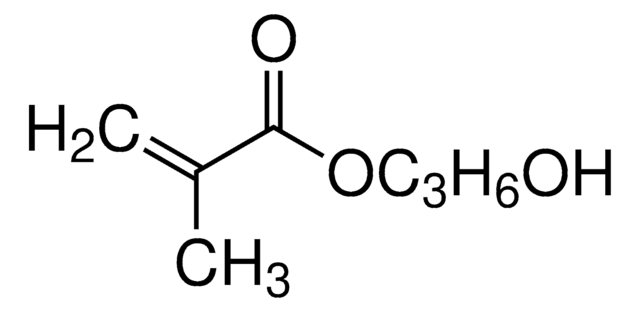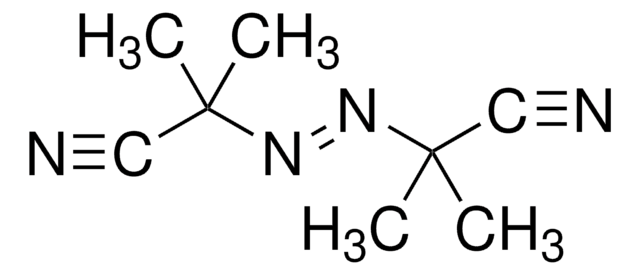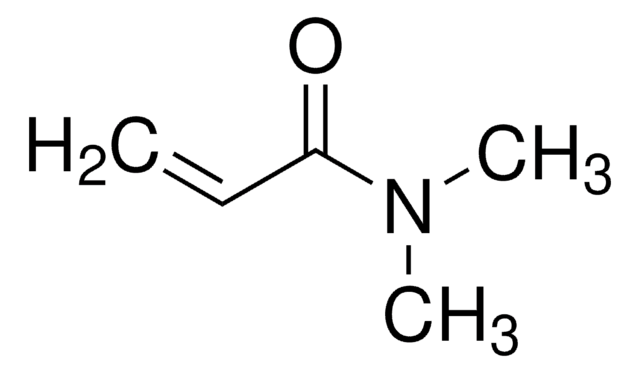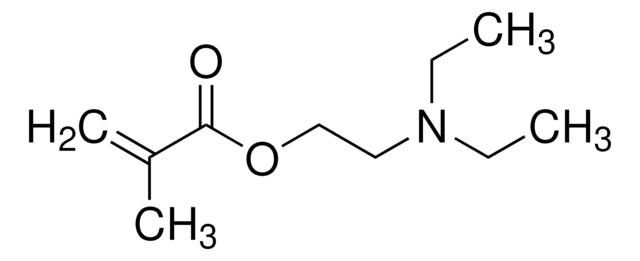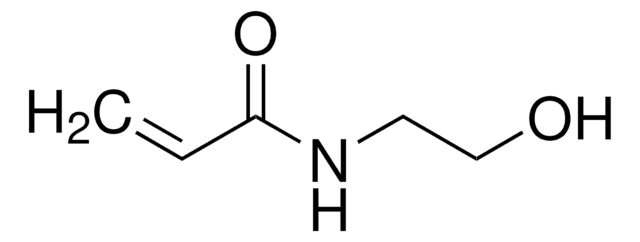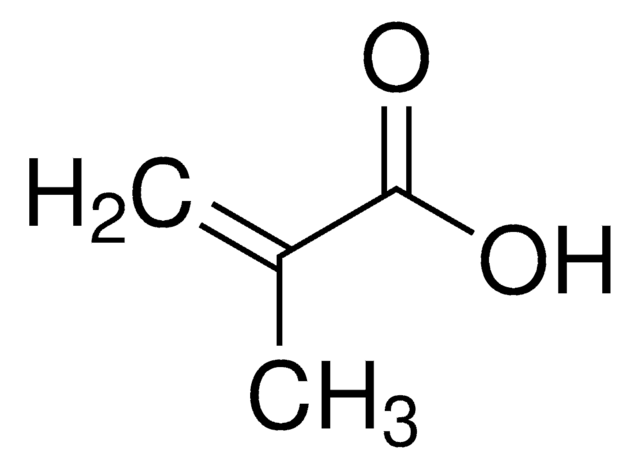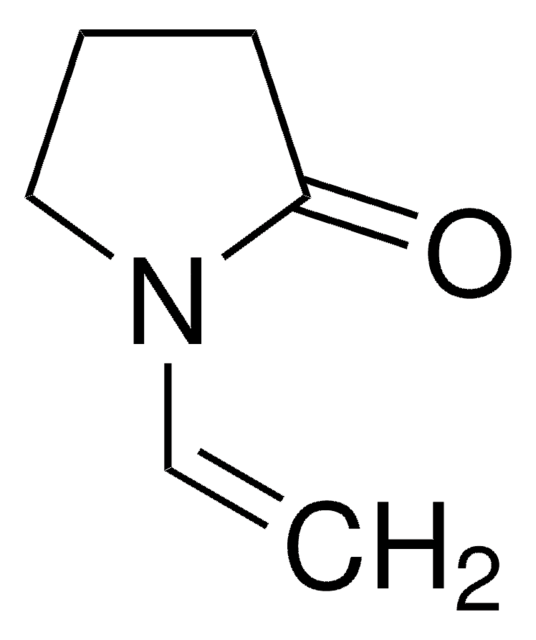17348
2-Hydroxyethyl methacrylate
embedding medium (for microscopy)
Sinonimo/i:
1,2-Ethanediol mono(2-methylpropenoate), Glycol methacrylate, HEMA
About This Item
Prodotti consigliati
Grado
embedding medium (for microscopy)
Livello qualitativo
Densità del vapore
5 (vs air)
Tensione di vapore
0.01 mmHg ( 25 °C)
Saggio
≥99%
Stato
liquid
contiene
~0.001% hydroquinone monomethyl ether as stabilizer
Impurezze
<250 mg/kg free acid (as methycrylic acid) (T)
Indice di rifrazione
n20/D 1.453 (lit.)
n20/D 1.453
P. ebollizione
67 °C/3.5 mmHg (lit.)
Densità
1.071 g/mL at 20 °C
1.073 g/mL at 25 °C (lit.)
Temperatura di conservazione
2-8°C
Stringa SMILE
CC(=C)C(=O)OCCO
InChI
1S/C6H10O3/c1-5(2)6(8)9-4-3-7/h7H,1,3-4H2,2H3
WOBHKFSMXKNTIM-UHFFFAOYSA-N
Cerchi prodotti simili? Visita Guida al confronto tra prodotti
Applicazioni
Avvertenze
Warning
Indicazioni di pericolo
Consigli di prudenza
Classi di pericolo
Eye Irrit. 2 - Skin Irrit. 2 - Skin Sens. 1
Codice della classe di stoccaggio
10 - Combustible liquids
Classe di pericolosità dell'acqua (WGK)
WGK 1
Punto d’infiammabilità (°F)
222.8 °F - closed cup
Punto d’infiammabilità (°C)
106 °C - closed cup
Dispositivi di protezione individuale
Eyeshields, Faceshields, Gloves, type ABEK (EN14387) respirator filter
Scegli una delle versioni più recenti:
Possiedi già questo prodotto?
I documenti relativi ai prodotti acquistati recentemente sono disponibili nell’Archivio dei documenti.
I clienti hanno visto anche
Il team dei nostri ricercatori vanta grande esperienza in tutte le aree della ricerca quali Life Science, scienza dei materiali, sintesi chimica, cromatografia, discipline analitiche, ecc..
Contatta l'Assistenza Tecnica.